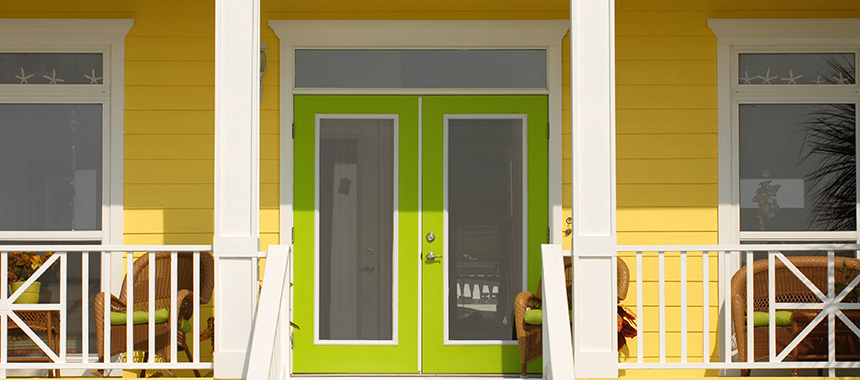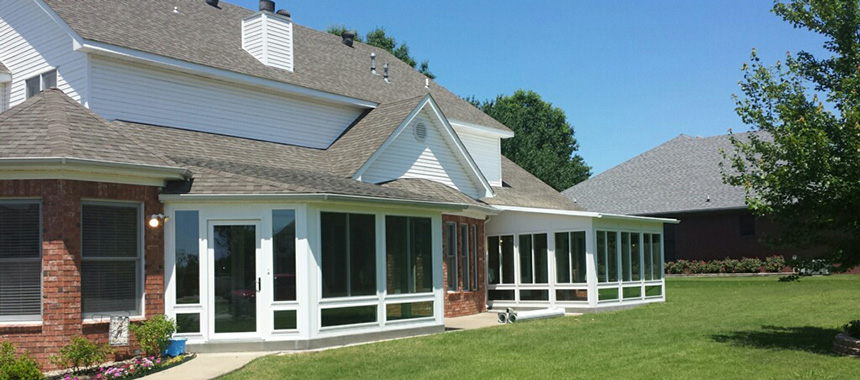
The sun is a glorious source of natural energy and vitamin D that we crave, especially in the winter months when drab and dreary weather makes it seem like it’ll never come out again. It’s so great that it can even help you save on energy bills! By ensuring your home is filled with natural light and the right types of windows, you can really watch your monthly energy bills go down.
Using the Sun the Most
Even though winter months mean less sunlight overall, use the sun to your advantage as free heat. This is often referred to as “daylighting,” and it just means using natural sunlight to brighten and warm up your home’s interior. Advances in lighting design, plus window placement, mean that all you really need to do is turn off artificial light during the day and let the sunshine in! Open the curtains and shades on windows that face south to bring in free heat. Close those same blinds and curtains after sundown to the heat inside. The more natural light you have, the less you have to rely on energy to power lamps and other lighting fixtures.
One of the greatest assets of large windows like bay windows or other windows with special treatments is that they offer aesthetics and functionality. Large windows will just let in more light, which translates to more heat, and therefore less spent on your heater using energy from the grid. For instance, a large bay window on the south side of your house that overlooks your deck will naturally bring in more light and heat to your living room because of where it’s facing, the impact of the sun, and so on.
Energy Efficient Windows
The best windows provide heat from the sun in the winter, but the worst windows account for up to 25 percent of your heating bill by letting heat out, according to energy.gov. Energy efficient windows with doublepane windows and highquality glass with low emissions coatings are one of the best ways you can cut down on energy bills. These kinds of windows cut back on heat loss, and in climates where it’s not as cold, they can reduce heat gain. Insulated windows that fit tightly will also help protect against cold drafts, which means spending less on heating. High performance windows are an investment, but they do improve a home’s energy performance.
Door Windows and Skylights
It’s not just large windows that will make a direct difference in your heating bill. Small windows like skylights, bathroom windows, and windows on doors also help add up savings. This is because these smaller sources of light are still bringing in natural light and heating up your home in areas you may not expect, thus contributing to lowering overall energy costs. In terms of insulation and energy efficiency, the same ideas apply here that you would apply to large windows. Look for the ENERGY STAR logo whenever possible, because when you replace old windows with ENERGY STAR qualified windows, it can lower household energy by up to 15 percent.
“Passive” Solar Energy
In many states, solar energy rebates are greater than ever, which means you can install renewable solar panels on your rooftop, and use solar energy as your main energy source. Unfortunately, it’s still too expensive for a lot of homes. That’s why it’s a good idea to use “passive” solar energy, like those southfacing windows mentioned earlier. Consider planting trees or plants outside near south, east, and west-facing windows to let in the sun’s heat during the winter and buffer against wind. Furthermore, installing thermal mass materials like stone, concrete, or metal on your patio or deck can help sunlight bounce off, creating unexpected solar heating systems.
Geography and Why it Matters When Selecting New Windows
Where you live should definitely influence your glass choices, as local climates and exposure to the elements may force a few necessary upgrades. Still, the better your window insulates, the more comfortable your home will feel. Your window’s energy performance label is a tool that helps you figure out how well it will function in summer and winter, as well as how well it will keep out wind and resist condensation.
Solar Heat & Gain Coefficients (SHGC) ratings help you determine the performance rating of the entire window, such as the ability to absorb heat from the sun, through ratios. The maximum amount of solar heat gain that can come through a window is one, and zero is the least amount. For example, a SHGC of 0.40 means 40 percent of available solar heat is coming through the window. Most solar heat comes through your doors and windows, so if you want to block out the sun, you want to install windows with low SHGC ratings.
How do you cut down on energy bills in your home?

